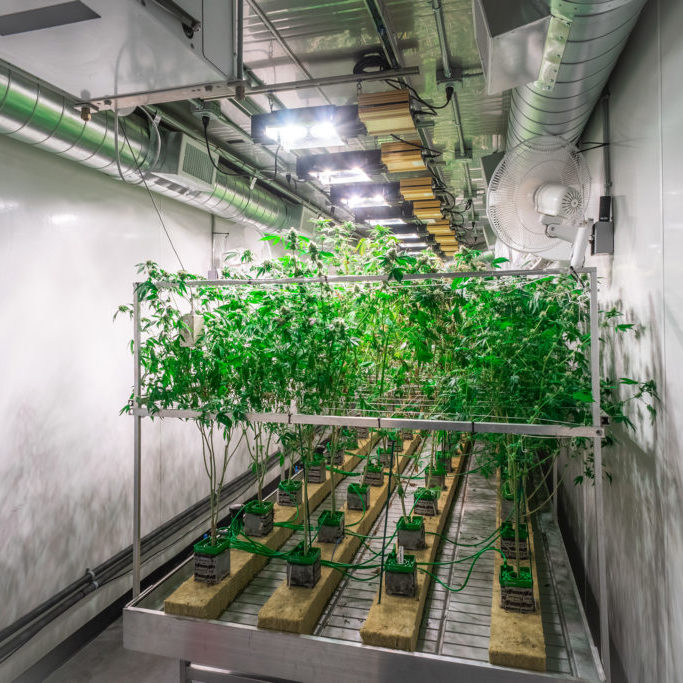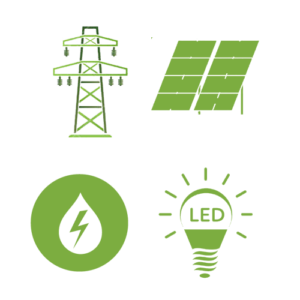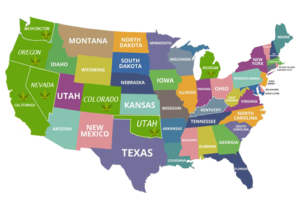How to Start a Commercial Cannabis Operation
Washington State was one of the first in the USA to legalise recreational cannabis. Since then the market has generated more than $1billion in sales, in turn generating more than $250 million for the state through excise taxes. The move to get into the cannabis market has since turned into a goldrush- there is money to be made. In states when legalization has yet to happen, many are seeking to establish their foothold so they are ready when their local market begins to expand. For others it’s a case of expanding existing ventures and being ready to pounce.
Whoever you are, this is your guide to starting a commercial cannabis grow operation. We’ll go through the pros and cons of growing indoors and outdoors as well as the major things you need to take into account when developing your business plan. Here at Micro labs Farms we’ve supplied shipping container farms for cannabis operations across the country so the article below is a distillation of our experience.
THE BASICS
First of all, you need to be prepared. Before you gather the information you’ll need ambition and be prepared for hard work. Once you’ve got over this psychological hurdle you’ll need to look through the history of the cannabis production industry and be prepared to keep track of political and legal issues in your state down to a local level.
YOUR BUSINESS PLAN
Although business plans are pretty much standard in structure, a plan for a cannabis business is going to be slightly different. You will, of course, need sections on financing, competitor research, marketing, operations, ownership structure as well as cost and sales projections. However, you will have to demonstrate you fully understand state-specific cannabis regulations and the direction of travel for future legislative activity. You need to show your business won’t run into brick walls from regulations or other competitors. For this, check through our data below but also bolster your research by finding a local consulting service or contact the relevant department of your state government office.
In particular, a cannabis business plan should show you understand:
- Local State, County and City laws
- Testing capabilities and protocols
- Security and product traceability
- Employee training and compliance with standards
- Waste removal
- Transportation and logistics for retail, packaging, and processing
And finally, your business plan will need an accurate description of the grow facility, operational planning, and the entire production process including equipment, soil, and fertilizers you intend to use.

SETTING UP YOUR OPERATION
You’ll either be setting up an outdoor farm with land or an indoor grow room. There will be local regulations which may require growers to be placed certain distances from public schools, parks, transit centers, libraries, or arcades that cater to minors.
Outdoors
A huge input to this part of the calculation will be the local climate. The Pacific Northwest lends itself very well to outdoor cannabis production. By growing in remote locations, plants can grow considerably over 10 feet high, even allowing them to be used as a cover crop- providing shelter to more delicate crops like tomatoes and carrots.
In Washington State, outdoor growing facilities must be surrounded by a wall or physical barrier at least eight feet high. In Colorado, producers are prohibited from growing cannabis outside of secured, enclosed locations – including high fences and semi-permeable roofing.
Space is rarely a limitation. Instead, your limitations will be natural- pests, fungus, and of course you are highly susceptible to changes in weather patterns. Weather over the last few years is not a guide to the future- and you can be affected by drought or excessive rain. Cannabis can also be as fickle a crop as any other. Outdoor growing makes sense if you have experience or already run a regular farm. Otherwise you will need to carefully weigh up the potential risks.
Indoors
Indoor cannabis grow facilities must be in an enclosed and secured facility with functional windows, doors, rigid or semi-rigid walls and a roof.
Growing indoors gives the grower considerably more control over the environment at the expense of space. Humidity, light, water and to varying degrees pest control and invasive species can be much more controlled. The major expense will be the facility itself and keeping it operational- ground space especially in urban environments, water and electricity. The pressure here is always on maximising yield but also on energy efficiency.
A typical cannabis plant needs space for its roots. One plant needs a five-gallon pot by itself, but many greenhouses and shipping containers use grow bags, either arranging on trays or even towers.
Another critical aspect of growth can be the soil you use. Obviously, grow medium is important whatever the crop, but with cannabis it makes a tremendous difference. Cannabis plants prefer pH environments of 5.5-6.5 which means constant monitoring and careful watering to ensure consistency. Of course, one option is to go for a hydroponic greenhouse and immerse cannabis roots is a tailored nutrient solution- this is what we do here at Micro Lab farms.
Want to Start Growing your Cannabis Production?

Power Issues
The cost of electricity is the number one expense facing indoor producers. In fact the cannabis industry is already a huge consumer, even without full national legalization. Cannabis crops take up 1% of national electricity use, or $6 billion each year.
Lighting, humidity control, aircon, irrigation control, ventilation and control systems all burn up electricity. There are a number of choices you can make which will help alleviate these costs:
HPS vs LED
This is a huge debate within the industry. The most consistent form is HPS – or High Pressure Sodium lighting. But these run hot and require high power ventilation. Modern LED systems are considerably more flexible and energy-efficient, but some argue not as consistent over time.
Grid vs Solar
In Boulder, Colorado, the city has implemented a licensing solution that requires growers to use energy monitoring devices as well as paying a fee for carbon emissions, adopting renewable energy sources, or purchasing energy credits.
Water
A single cannabis plant can use as much as 22.7 liters of water per day, so looking at ways to save water makes sense. Some cannabis producers are investing in closed-circuit desalination (CCD) systems. At the same time as purifying incoming municipal water sources, these CCD systems can recover as much as 97% of wastewater, reducing both water demand and saving in disposal fees.
Turnkey Systems
There are ways of getting a plug and play operation up and running very quickly. Micro Lab Farms is a leading turn-key container farming system manufacturer, providing a farm in a box- in our case literally a container shipping box refurbished and refitted to create an indoor marijuana grow box. This system can make enormous savings in time and capital expenditure too- the grower can then focus all their time on managing yield and refining operations.
Energy Efficient Greenhouses
The importance of selecting a functional, sustainable grow facility early in the life of your recreational or medical cannabis business is huge- this decision will dictate your economics for the long run. There is a direct correlation between sustainable practices and profit margins on large-scale facilities. There are a host of small private projects testing and researching affordable methods of growing and distributing recreational cannabis in the U.S.
CHOOSING AND PROMOTING CANNABIS PRODUCTS
Most cannabis seeds are sourced from the Netherlands. Although precise sales figures aren't available a simple search will show which are the most popular or best selling. However a difficulty lies in responsible sourcing, as seeds ostensibly from the same strain may be wildly different. Labelling in the cannabis industry is very much in the early days. Even basic information about genealogy and type of seed may be entirely wrong.
There is no easy way out of this other than you will need to know your crop and product intimately and you’ll want to carefully investigate both the quality and origin of seeds you get. This can be an issue if you intend to start growing for medical purposes. If individuals do not respond the way they should because your strain is wrong, it could be a serious risk for your business plan.
The precise strains you choose are up to you. Popular ones include Acapulco Gold, Blue Dream, Purple Kush, Pineapple Express, Gelato, Sour Diesel or Purple Punch. Or you could choose to branch out into something lesser-known. You need to know your target market inside out and understand what they already have or what kind of niche could open up for you.
STARTING WITH SEEDS
You can start your operation with either seeds or clones of feminized plants. Both have advantages but in all cases provenance and your growing skills will be required!
Seeds allow a grower complete control over the entire growth cycle, but the process takes longer as a result. Getting clones from another grower will speed up the process, but leaves the plants susceptible to mold, disease, or shock if replanting is required.
There are three types of cannabis seeds a first-time producer can purchase: feminized seeds, regular seeds, and autoflower seeds.
- Feminized seeds are widely preferred in recreational cannabis businesses due to the plants being specifically bred to only produce bountiful female plants. You avoid wasting time growing male plants.
- Regular seeds are cheaper and more reliable than other types of seeds, but be aware that half of your crop will be male cannabis plants and will therefore not flower.
- Auto-flowering seeds begin to flower on their own – no adjustments to light cycles necessary. These plants are easier but tend to be smaller as a result.
The first rule of choosing a cannabis clone for the basis of your grow operation is to ensure the plant intended for cloning was taken from a female plant. Clones from a male plant will be useless! You can buy a female clone which is already cut and ready to root which saves 2-3 weeks of germination time. However clones are susceptible to mold and pests and roots should be inspected thoroughly.

FINANCE
Unfortunately, legalization has not made banks any more likely to lend money for cannabis business ventures. This isn’t their fault, as under FDIC insurance rules, banks can lose their protection under federal law by taking on “existential” risks – including investment in companies who are technically violating federal law.
In the meantime private investors have flooded into the market: venture capital, private equity funding, angel investors, private lenders, and even cannabis business consulting and investing firms.
Financing conditions will of course vary. In general most will expect to see:
- an incorporated organization: you have to be a legal company
- a business bank account
- at least 6 months continual operation
- monthly gross sales of at least $10,000
- proveable growth
- a good credit score(at least 500)
- a business plan with achievable ambition
STATE BY STATE CANNABIS POLICIES
Legalization across the USA is a patchwork, with variations by state and even by city. Even if a market is “legalized” it doesn’t mean it’s a free-for-all. The differences between Alaska and Colorado are worth studying and understanding. Also, states that are pre-legalization will have different development. It doesn’t necessarily follow that every state will follow the same development path as Washington.
The list below gives a high-level overview of the major differences in some key states. Whatever your business plan or target market you will be expected to show you fully understand your customers and likely local legal development in the next 5 or 10 years. Keep an eye on local politics as well as major pressure groups like the Marijuana Policy Project

STATES WHERE CANNABIS IS LEGAL
ALASKA
Alaska first legalized the in-home personal use of cannabis in 1975 before a voter initiative reversed that decision in 1991. In 2014, voters in the state approved Ballot Measure 2, a measure that officially legalized the production, distribution, and sale of cannabis products which took effect early in the following year.
As the 48th most populous state, it’s not expected that cannabis in Alaska will reach levels of success we see where the markets are already mature. Given its isolation, we’re unlikely to see cannabis tourism in Alaska, the known phenomenon of interstate travel with the goal of trying cannabis products in nearby states.
However applications for cannabis establishments are still open in Alaska and the market, while predicted to be smaller than Colorado and Washington, should be lucrative for early investors.
CALIFORNIA
California officially legalized the sale of recreational cannabis on January 1, 2018.
The road to legal recreational marijuana sales has been tricky. Without a cohesive strategy to regulate and control the medical marijuana industry, there were legal logjams for county and city officials throughout the state. Governor Jerry Brown signed key pieces of medical marijuana reform into law in 2016, strengthening the push toward full legalization.
Due to the size of the state and its national economic importance, legalizing recreational cannabis in California has been a significant step toward federal legalization as well as expanded efforts to reform U.S. drug policy. The impact of the nation’s most populous state legalizing cannabis may prove a windfall for efforts to expand legislation to the federal level.
COLORADO
With cannabis sales of over $1 billion, Colorado cannabis is neck-and-neck with Washington State as far as consumption habits and general sales, but the first state to legalize recreational cannabis is also serving as the testbed for future markets.
The big takeaway here is not the headline sales figure- it is the vast and varied successes of sales tax distribution from the cannabis industry. While not all residents of Colorado approve of cannabis legalization, the results have been impactful for smaller, rural communities. While the Denver metro area is home to 85% of the state’s cannabis stores, the sales tax has gone to the general state fund to help build roads, fund scholarships, and fight homelessness across Colorado. Marijuana legalization revenue now accounts for roughly 3% of the state’s $30 billion budget.
In addition, neighboring states with long histories of agriculture may look to Colorado for inspiration should legalization come their way. An incredible 25% of people who traveled to Colorado between 2013 and 2018 listed cannabis as a reason. Companies operating in the likes of Montana, Arizona, and New Mexico, which already have medical marijuana initiatives in place, must be ready to scale up quickly so their own state customers can buy locally.
Another local initiative that will have a major impact concerns cannabis edible products. The state has introduced a new mandatory warning label system that places an identifying emblem on the actual products themselves – not just packaging. As this takes place during production, this is widely predicted drive up the costs for producers of edible products. Should other states implement similar labelling legislation, new producers may opt for flower and oil production over edibles and beverages.
Cannabis legislation impacting growers and producers in Colorado has become quite sophisticated- if you’re entering the Colorado market or are perhaps wanting to stay ahead in your state by seeing where legislation could go, it's worth getting professional advice
MASSACHUSETTS
In 2016 Massachusetts became the first state on the east coast to legalize marijuana
The initiative allows users 21 and over to use and possess up to an ounce of marijuana in public and 10 ounces at home. Users can also have up to six plants and landlords cannot stop residents from growing personal plants.
Although the law went into effect in December 2016, it wasn’t until July 2018 that recreational cannabis shops were allowed to open as legislators needed to develop regulatory laws for recreational use.
OREGON
Among the highest percentage states by cannabis consumption, it’s surprising that Oregon wasn’t the first to legalize cannabis sales. It was the first to decriminalize cannabis possession in 1973 and the state made a push for full legalization way back in 1986, but it was only in 2014 full legalization went through.
Due to the region’s mild climate and proximity to California, Oregon is a favorite location for producing cannabis. With legalization still quite recent, there is a huge opportunity for first-time growers and second-generation producers from existing markets to establish a foothold here. Also, licensing for producers, processors, and retailers in Oregon is still relatively straightforward, which could reduce the initial cost of setting up compared to a more established market.
WASHINGTON
Like Colorado, Washington serves as a model for emerging and future markets. The ability to grow, possess, and distribute cannabis products hasn’t been an easy one. Even after cannabis was legalized in 2012, some county and local governments placed ordinances effectively banning it again.
The number of licenses issued by the State of Washington Liquor and Cannabis Control Board is still highly restricted and no additional licenses for producers or distributors will be available for the foreseeable future. However, private sales on existing licenses are beginning to become more common as the market has stabilized. Washington easily tops $1 billion in total sales and bringing in a total $250 million in state excise taxes.
Looking forward, the Washington State Department of Agriculture has officially proposed hiring a new cannabis regulator who would oversee a program to certify organic cannabis products within the state. This could possibly allow the State to issue new organic-only licenses for new producers.
WASHINGTON, D.C.
As of February 2015, possession of cannabis became legal in the nation’s capitol for adults aged 21 or older, but voters were not able to push as far as a fully-fledged recreational market. As a result, residents of D.C. are able to cultivate their own cannabis plants and use the products on private property, as well as ‘transfer’ cannabis, without exchange of money, goods, or services (gift) to any adult over the age of 21.
As D.C. is home of the federal government, which currently views cannabis in the same light as other Schedule I Substances (like heroin) it’s unlikely that full legalization will occur until federal laws change to allow the controlled sale and distribution of cannabis products.
NEVADA
Along with California and two other states, Nevada voted to legalize recreational cannabis in 2016 and the resulting measures took effect the following year. On par with past markets, the initial recreational license application was open only to medical marijuana dispensaries in good standing and citizens of Nevada are banned from growing their own cannabis unless they live more than 25 miles from a licensed dispensary. and, bit by bit, legislation is opening up retail sector.
MAINE
Maine became one of the first states on the east coast to legalize marijuana. Question 1 appeared on the 2016 ballot, and passed by a small margin with 50.26% of the vote.
Maine is the first state to allow “social clubs” for cannabis to allow users to consume retail recreational products on the premises. Visitors to cannabis social clubs must use products there and not transport them off the property. Likewise, retail stores cannot allow patrons to open and consume their purchases within the store. Cannabis users would also be unable to use off-site cannabis at social clubs. Sales are projected to begin in spring of 2020.
VERMONT
As of July 1, 2018, adults in Vermont over the age of 21 can possess up to one ounce of cannabis, and grow two mature and four immature plants in their home. The plants must be screened from public view and only those over 21 can have access. Tenants who are renting need to get permission from their landlord to grow at home.
The 2018 act has no sales or revenue provisions and despite protestations the legislators have made no progress on a tax-and-regulate system.
MICHIGAN
The 2018 Michigan Regulation and Taxation of Marihuana Act allows persons age 21 and over to possess up to 2.5 ounces of cannabis in public, up to 10 ounces at home, and cultivate up to 12 plants at home. It also sets up a system for the state-licensed cultivation and distribution of cannabis, with sales subject to a 10% excise tax (in addition to the state's 6% sales tax).
The first retail businesses will likely be open by 2020.
MISSOURI
In November 2018, voters in Missouri passed Amendment 2, the state constitutional amendment legalizing medical cannabis. The new law allows patients who qualify and receive physician approval to grow up to six marijuana plants, buy 4 ounces of dried marijuana, and possess a 60-day supply of dried marijuana. Doctors can prescribe medical marijuana for any condition they feel merits this treatment. Revenue from sales tax will go to veterans’ services.
On June 4, 2019, Missouri’s Department of Health and Senior Services began to make applications for patient cards and businesses available.
Missouri officials have not come to a consensus on whether medical marijuana users will be denied state jobs or welfare benefits.
OKLAHOMA
Oklahoma voters passed State Question 788 in June 2018, legalizing medical marijuana. Oklahoma is one of the few that allow doctors to recommend cannabis for any medical condition deemed appropriate (Other states usually only allow its recommendation for specific diseases).
There are still some growing pains as the state tries to provide guidelines for the industry and navigate some complications at the federal level as well. For example, a big part of the law requires medical marijuana businesses to track every transaction electronically (“seed-to-sale”) and there is a lack of clarity about how these issues will be solved.
CANADA
Our northern neighbor has legalized the sale of some forms of recreational cannabis from October 2018. This legalization comes with regulation similar to that of alcohol in Canada, limiting home production, distribution, consumption areas and sale times. The exporting and importing of cannabis is illegal, with the exception of medical and scientific use, which will require a permit.
Growers that currently produce marijuana are licensed by Health Canada under the Access to Cannabis for Medical Purposes Regulations (ACMPR). Sales were allowed only by mail order, but by late 2017, some major retailers had applied for a change in the rules to allow them to also sell the product. The vast majority of these companies were located in Ontario.

STATES CONSIDERING LEGALIZATION
ARIZONA
Full legalization has taken a step back in Arizona. Proposition 205 would have allowed people 21 and over to use marijuana recreationally. The ballot had 51.32% voting no on the proposition.The campaign to defeat Proposition 205 raised more than $6 million, aided significantly by the fundraising efforts of Gov. Doug Ducey.
While it remains illegal for Arizona residents to use recreational marijuana, prior propositions 200 and 203 are still in effect. These measures allow people with certain conditions to have marijuana for medicinal use.
CONNECTICUT
The stage is set for legalization in Connecticut, with a successful medical marijuana program launched in 2012 and a positive outlook at several polls. However, Connecticut lawmakers have yet to decide when to make another attempt at legalizing and taxing recreational marijuana and local political sensitivity means the issue is bumped for the legislative calendar regularly.
RHODE ISLAND
Marijuana has been legal statewide for medical use, within state regulations, since 2006. Rhode Island regularly beats Colorado, Washington, and every other state in the union for highest percentage of cannabis users saying they’ve consumed cannabis within the last month – for two years running.
That doesn’t mean legalization is a sure bet for the tiny Northeastern state. Bills to legalize marijuana have been introduced in the Rhode Island General Assembly every year since 2011, but have to date been "held for further study" with no action.
STATES THAT HAVE NOT LEGALIZED CANNABIS
DELAWARE
Prospects for recreational legalization gloomy at best in Delaware. There’s only a single medical marijuana dispensary in operation in Delaware and just 700 patients registered. While Governor Jack Markell signed a decriminalization bill late 2015, statewide legalization has yet to happen.
MARYLAND
Maryland is making a serious effort toward implementing an effective medical marijuana market, although slowly. After five years of delay, Maryland's medical marijuana program became operational and sales began in 2017. By September 2019, Maryland had 18 licensed growers, 82 licensed dispensaries, and 70,000 registered patients (slightly more than 1% of the state's total population). Recreational use should be not far behind.
NEW YORK
New York has been a stop-start affair. Medical cannabis has been legal since 2014 but only five growers are authorised. In his 2018 State of the State address Governor Cuomo urged the New York State Legislature to fund a study on the effects of legalizing marijuana for recreational use. The Department of Health completed its study and has recommended the legalization of marijuana in New York, citing economic, public health, and public safety benefits. New York enacted legislation expanding the decriminalization of recreational use of cannabis, but did not legalize it.
SOUTH DAKOTA
South Dakota is the only state to make it illegal to test positive for cannabinoids even if the drug was consumed in a state where it is legal. This “internal possession” law carries a stiff penalty of a year in jail and a $2,000 fine.
Activists gathered more than the required number of signatures to get on the ballot, but the state rejected the petitions because not all the signatures were valid.
Address
Micro Lab Farms
3353 Needles Hwy
Needles, CA
(951) 266-6096
